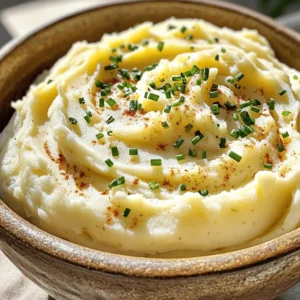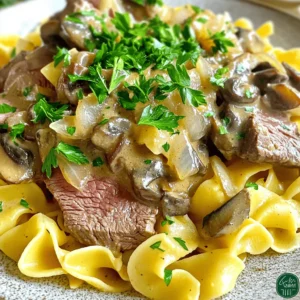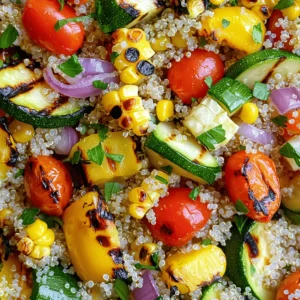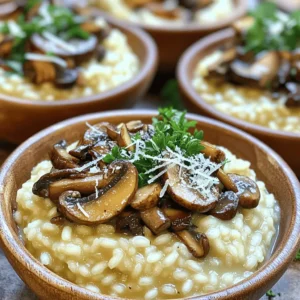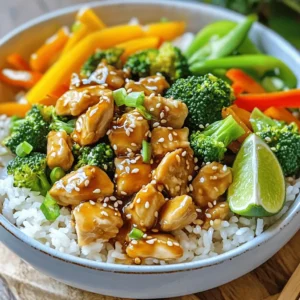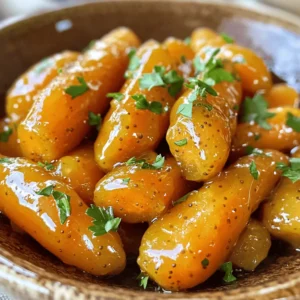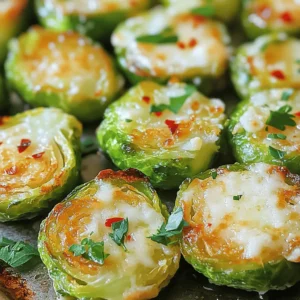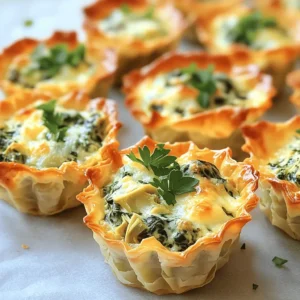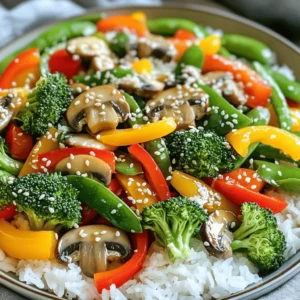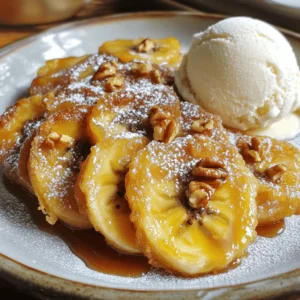- Spicy Tuna Poke Bowl Tasty and Easy to Make Recipe
- Creamy Avocado Pasta Simple and Tasty Recipe
- Zesty Lime Grilled Shrimp Flavorful and Easy Recipe
- Maple Pecan Granola Bars Simple and Healthy Snack
- Egg Muffins with Veggies Tasty and Simple Recipe
- Lime Cilantro Rice Fresh and Flavorful Side Dish
- Crispy Chickpea Salad Flavorful and Nutritious Dish
- Sweet and Spicy Meatball Subs Tasty Comfort Food
- Lemon Herb Grilled Chicken Recipe Simple and Tasty
- Apple Cinnamon Overnight Oats Tasty and Simple Recipe
- Chocolate Chip Pancakes Fluffy and Delicious Recipe
- Lemon Herb Grilled Salmon Recipe for Flavorful Meals
- Maple Glazed Carrots Sweet and Simple Side Dish
- Cinnamon Sugar Churros Crispy and Sweet Delight
- Mocha Chip Protein Bars Energizing and Nutritious Snack
- Garlic Parmesan Roasted Potatoes Simple and Tasty Dish
- Pesto Caprese Pasta Salad Fresh and Flavorful Delight
- Teriyaki Chicken Skewers Flavorful Grilling Delight
- Strawberry Banana Smoothie Bowl Tasty and Simple Recipe
- Creamy Avocado Pasta Quick and Easy Recipe Guide
- No-Bake Chocolate Oatmeal Cookies Simple Recipe
- Savory Honey Mustard Chicken Thighs Easy Recipe
- Savory Buffalo Cauliflower Bites Easy and Flavorful Dish
- Creamy Garlic Mashed Potatoes Velvety and Simple Dish
- Classic Lentil Soup Flavorful and Nourishing Delight
- Crispy Garlic Parmesan Wings Tasty and Easy Recipe
- Classic Beef Stroganoff Rich and Flavorful Comfort Dish
- Grilled Vegetable and Quinoa Salad Fresh Delight
- Instant Pot Creamy Mushroom Risotto Rich and Delicious
- Teriyaki Chicken Bowls with Rice Tasty Comfort Meal
- Honey Mustard Glazed Carrots Flavorful and Easy Side
- Strawberry Shortcake Trifle Delightful and Easy Recipe
- Garlic Parmesan Roasted Brussels Sprouts Flavor Boost
- Savory Spinach Artichoke Dip Bites Delightful Snack
- Quick and Easy Vegetable Stir Fry Delightful Dish
- Coconut Lime Shrimp Zesty and Flavorful Delight
- Cinnamon Roll Casserole Delightful Breakfast Recipe
- Easy No-Bake Tiramisu Delightful and Simple Recipe
- Mango Sorbet Refreshing Dessert for Hot Days
- Fried Banana With Brown Sugar Crispy Delight Recipe
- Best Pumpkin Cheesecake Easy to Make Delight
- Easy Banoffee Pie with Caramel and Cream Recipe


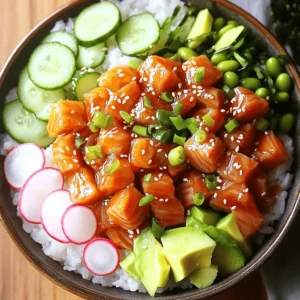
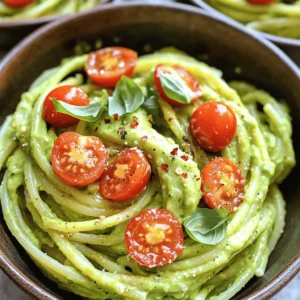

![- 2 cups rolled oats - 1 cup pecans, chopped - 1/2 cup almond butter (or any nut butter) - 1/3 cup pure maple syrup - 1/4 cup honey (or agave syrup for a vegan option) - 1/2 teaspoon vanilla extract - 1/2 teaspoon cinnamon - 1/4 teaspoon salt - 1/2 cup dried cranberries or raisins (optional) - 1/4 cup mini dark chocolate chips (optional) The star of this recipe is the maple syrup. It gives the bars a sweet and rich flavor that pairs perfectly with the pecans. You can switch almond butter for another nut butter, depending on your taste. The oats offer a chewy texture, making every bite satisfying. When making these bars, consider adding dried fruit or chocolate chips for extra flavor. Dried cranberries add a tartness that balances the sweetness of the maple syrup. Mini dark chocolate chips bring a touch of indulgence that kids and adults love. Each bar has about 150 calories. They contain 4 grams of protein, 7 grams of fat, and 20 grams of carbohydrates. This makes them a great snack option for energy without a sugar crash. You can easily make these bars vegan by using agave syrup instead of honey. For a nut-free version, swap nut butter with sunflower seed butter. To keep them gluten-free, ensure your oats are certified gluten-free. This way, everyone can enjoy a delicious and healthy snack! - Preheat your oven to 350°F (175°C). - Line an 8x8 inch baking pan with parchment paper. - In a large bowl, mix 2 cups rolled oats and 1 cup chopped pecans. - Spread this mix on a baking sheet. - Toast the mixture in the oven for about 10 minutes. Stir halfway through. - In a saucepan over low heat, combine: - 1/2 cup almond butter - 1/3 cup pure maple syrup - 1/4 cup honey - 1/2 teaspoon vanilla extract - 1/2 teaspoon cinnamon - 1/4 teaspoon salt - Stir the mix for 3-5 minutes until smooth. - Remove the toasted oats and pecans from the oven and let cool slightly. - Pour the warm almond butter mix over the oat and pecan mix. - If desired, add 1/2 cup dried cranberries and 1/4 cup mini dark chocolate chips. - Use a spatula to stir everything until well coated. - Transfer the granola mix into the prepared baking pan. - Press the mixture firmly into the pan using a spatula or your hands. - Bake for 15-20 minutes until the edges start to brown. - Allow the bars to cool in the pan for about 10 minutes. - Lift them out using the parchment paper and let cool completely. - Once cool, cut into bars of your desired shape and size. For the complete recipe details, check the [Full Recipe]. To keep your granola bars fresh, store them in an airtight container. Place parchment paper between layers to avoid sticking. They stay good for about a week at room temperature. For longer storage, you can freeze them. Wrap each bar in plastic wrap and place them in a freezer bag. They will last for up to three months in the freezer. For a fun presentation, stack your granola bars on a wooden board. Add some extra pecans on top and drizzle with maple syrup. This gives a nice rustic look. You could also wrap each bar in parchment paper for easy snacks on the go. Pair these bars with yogurt or fresh fruit for a great breakfast or snack! A common mistake is not pressing the mixture firmly enough in the pan. This can lead to crumbly bars. Make sure to press it down well before baking. You can also customize your bars. Try adding different nuts, seeds, or dried fruits to match your taste. If you love chocolate, toss in some dark chocolate chips. This will add richness and flavor to your bars! For the full recipe, check the section above. {{image_2}} You can easily change the flavor of these bars. Adding different nuts or seeds makes a big difference. Try walnuts, almonds, or sunflower seeds. Each nut brings a unique taste and texture. You can also switch up the sweetener. Instead of maple syrup, use maple sugar or brown sugar for a new flavor. If you want to use a different nut butter, go ahead! Peanut butter works well and adds a nice taste. You can even try sunflower seed butter for a nut-free option. Changing sweeteners can also help. Use agave syrup instead of honey for a vegan choice. This keeps the bars tasty and suitable for everyone. You can make these bars fit many diets. For a gluten-free version, choose gluten-free oats. This keeps the bars safe for those with gluten issues. If you prefer a keto diet, swap the oats with crushed nuts or seeds. This adds healthy fats and keeps carbs low. For a high-protein option, add protein powder to the mix. This boosts the protein and helps you feel full longer. You can find many brands that sell maple pecan granola bars. Some popular options include Nature Valley, KIND, and Larabar. Each brand offers a unique flavor and texture. I recommend checking the ingredient list. Look for bars with whole ingredients and minimal added sugar. You can find these bars in grocery stores or online. Websites like Amazon and Thrive Market often have great selections. Making your own granola bars has benefits. You control the ingredients, so you can skip preservatives. You can also adjust flavors to your taste. However, making them takes time and effort. Store-bought bars are quick and easy, but they might cost more. Homemade bars are cheaper in the long run, especially with bulk ingredients. You can make a large batch to save money and have snacks ready. Here are some brands you might enjoy: - KIND: Known for its crunchy texture and clean ingredients. - Nature Valley: Offers a variety of flavors but often has added sugars. - RXBAR: Great for protein, but check for nut allergies. - Larabar: A simple ingredient list, perfect for a quick snack. These brands balance great taste and nutrition. When shopping, read the labels for the best choice. Homemade granola bars can last up to two weeks. Store them in an airtight container. Keep them in a cool, dry place. You can also freeze them for up to three months. Just wrap each bar tightly in plastic wrap or foil before freezing. Yes, you can make these bars nut-free. Use seeds like sunflower or pumpkin instead of nuts. You can also use seed butter, like sunflower seed butter, in place of almond butter. This gives the bars a similar texture and flavor. Yes, you can substitute maple syrup with honey or agave syrup. Honey will add a nice sweetness and stickiness. Agave syrup is a great vegan option. Keep in mind that different sweeteners can change the texture, so adjust accordingly. Granola bars can be healthy. They provide fiber from oats and nuts. They also contain healthy fats and protein. However, watch for added sugars and unhealthy fats in store-bought versions. Always read the labels to make smart choices. To make these granola bars vegan, use agave syrup instead of honey. Ensure your nut butter is vegan too. Many brands offer vegan options. You can also avoid adding chocolate chips if they contain dairy. This guide covered key ingredients and steps for making delicious granola bars. You learned about storage tips, serving ideas, and how to customize your recipe. Remember, you can easily swap ingredients to fit your needs, whether it’s vegan, nut-free, or gluten-free. Making your own granola bars can save money and meet your taste. Get creative with flavors, and enjoy your tasty, healthy snacks!](https://mysavedrecipe.com/wp-content/uploads/2025/04/2d1f59f7-78e6-44b5-bf2a-e71d97ea7330-300x300.webp)
![To make delicious egg muffins with veggies, you need the following: - 6 large eggs - 1 cup spinach, chopped - 1/2 cup bell peppers (red, yellow, or green), diced - 1/2 cup cherry tomatoes, halved - 1/4 cup red onion, finely chopped - 1/2 cup shredded cheese (cheddar or mozzarella) - 1/4 teaspoon garlic powder - 1/4 teaspoon black pepper - Salt to taste This mix gives a great flavor and texture. Each ingredient plays a role. The eggs bind everything together, while the veggies add color and nutrients. You can try adding these for extra flavor: - Fresh herbs like parsley or basil for garnish - Alternative cheeses such as feta or goat cheese These options let you customize your muffins. Each ingredient can make your meal unique and tasty. Don't be afraid to experiment! First, you need to preheat your oven to 375°F (190°C). This step helps the muffins cook evenly. While the oven heats, grease your muffin tin with a bit of oil or cooking spray. This keeps the muffins from sticking. A well-greased tin is key for easy removal. Next, grab a large mixing bowl. Crack the eggs into the bowl and whisk them well. You want them to be nice and fluffy. After that, add the chopped spinach, diced bell peppers, halved cherry tomatoes, and finely chopped red onion to the eggs. Stir everything together gently. Now, sprinkle in the shredded cheese, garlic powder, black pepper, and salt. Mix until all the ingredients combine nicely. Make sure the veggies and cheese are spread evenly throughout the egg mixture. Now it’s time to fill the muffin tin. Pour the egg and veggie mix into each cup, filling them about 3/4 full. This gives them room to rise. Once filled, place the muffin tin in the preheated oven. Bake for 18-20 minutes. The muffins are done when the eggs are set and the tops look lightly golden. After baking, remove the muffins from the oven and let them cool for a few minutes. Then, gently lift them from the tin. If you want, add some fresh herbs on top for a nice touch. Enjoy your veggie-packed egg muffins! For the full recipe, see the earlier section. To make your egg muffins perfect, start with the eggs. Whisk them well until they are frothy. This helps to add air, making the muffins light and fluffy. Use a fork or a whisk for best results. When you pour the mixture into the muffin tin, do not overfill. Fill each cup about three-quarters full. This allows space for the muffins to rise without spilling over. One common mistake is not greasing the tin properly. Use oil or cooking spray to coat the tin. This step prevents sticking and makes cleanup easier. Another mistake is undercooking or overcooking the muffins. Keep an eye on the bake time. Check them at 18 minutes. The muffins should be set and slightly golden on top. To boost flavor, add herbs and spices. Fresh parsley, basil, or oregano work well. You can use about a tablespoon of chopped herbs for a great taste. If you want to change the cheese, try feta or goat cheese. They add a nice tang and work well with veggies. These options can give your muffins a tasty twist. For the full recipe, visit the [Full Recipe] section. {{image_2}} You can mix up the vegetables in your egg muffins for fun flavors. Zucchini adds moisture and a mild taste. Mushrooms bring a nice umami flavor and a chewy texture. Broccoli adds a bit of crunch and a pop of green. The great thing about these muffins is you can use what you have. Seasonal vegetables are also a good choice. In the summer, use fresh corn or diced tomatoes. In fall, consider sweet potatoes or squash for added sweetness. This way, you can enjoy different tastes each season. Adding protein to your egg muffins makes them heartier. You can use bacon, ham, or sausage for a savory touch. Cook these proteins first to get the best flavor. Chop them into small pieces before adding them to the mixture. If you're looking for plant-based options, tofu works great too. Crumble firm tofu and mix it in. You can also use chickpeas or black beans for added protein. These options keep your muffins tasty and filling while catering to various diets. For the full recipe, check out the details in the earlier section. Refrigeration Tips After you bake the egg muffins, let them cool completely. Then, place them in an airtight container. Store them in the fridge for up to five days. Always check for any signs of spoilage before eating. Freezing Instructions For longer storage, freeze the muffins. Wrap each muffin tightly in plastic wrap. Place them in a freezer bag or container. They can last for about three months in the freezer. When ready to eat, just thaw them in the fridge overnight. Best Methods for Reheating You can reheat egg muffins in the microwave or oven. For the microwave, heat on medium power for about 30-60 seconds. In the oven, preheat to 350°F (175°C) and bake for around 10 minutes. Maintaining Texture and Flavor To keep the muffins moist, cover them with a damp paper towel when microwaving. This helps to prevent them from drying out. If using the oven, you can add a splash of water to the baking dish to create steam. This keeps them soft and tasty. Yes, you can make these muffins ahead of time. - Meal Prep Suggestions: Prepare a batch on the weekend. Store them in the fridge for easy breakfasts. Allow the muffins to cool before placing them in an airtight container. They stay fresh for about five days. You can also freeze them for longer storage. Just reheat in the microwave or oven when ready to eat. You can easily modify the recipe to fit many dietary needs. - Gluten-Free and Dairy-Free Options: For gluten-free muffins, use gluten-free flour. Most veggies are safe for gluten-free diets. For a dairy-free option, skip the cheese or use a dairy-free cheese substitute. You can also add nutritional yeast for a cheesy flavor without dairy. These egg muffins last about five days in the fridge. - Storage Duration and Safety Tips: Store them in a sealed container to keep them fresh. If you notice any changes in smell or texture, it’s best to toss them. Always check before eating. In this blog post, I shared how to make tasty egg muffins. We covered the key ingredients, like eggs and fresh veggies, and added options for flavor, like herbs and alternative cheeses. I detailed step-by-step instructions, from preparing your oven to mixing and baking. Plus, I offered tips to ensure perfect muffins and variations to suit your taste. Remember, these muffins are easy to store and reheat. You can adapt them for any diet too. Enjoy your egg muffins and get creative with the flavors!](https://mysavedrecipe.com/wp-content/uploads/2025/04/1d4a3e34-6d6e-4af4-82c1-787e144f4de7-300x300.webp)
![- 1 cup long-grain rice (white or brown) - 2 cups vegetable broth or water - Zest of 1 lime - 2 tablespoons fresh lime juice - 1/4 cup fresh cilantro, finely chopped - 1 tablespoon olive oil - 1 small clove garlic, minced - 1/2 teaspoon salt - 1/4 teaspoon black pepper - Optional: lime wedges and extra cilantro for garnish Lime cilantro rice is fresh and full of flavor. You need just a few items to make it shine. The main star is rice. You can use either white or brown rice based on your taste. The broth or water helps to cook the rice and gives it more flavor. Lime zest and juice bring a bright taste that wakes up the dish. Fresh cilantro adds a wonderful herb note. Together, they create a symphony of flavors in every bite. For the additional ingredients, olive oil adds richness. Garlic gives a hint of warmth. Salt and pepper round out the taste, making each bite better. If you want to add a special touch, use lime wedges and extra cilantro for garnish. They make the dish look pretty and add more zest! For the full recipe, check out the detailed steps. - Rinse the rice under cold water. This step removes extra starch. A fine mesh sieve works best. - Toast the garlic in olive oil. Heat the oil in a medium saucepan. Add minced garlic and sauté for about one minute. Watch it closely; you don’t want it to burn. - Add rice and broth to the saucepan. Stir the rinsed rice into the pan. - Bring to a boil, then reduce heat. After boiling, lower the heat to let it simmer. Cover the pan tightly. - Allow rice to steam. Let it sit covered for five minutes after cooking. This helps the rice become fluffy. - Fluff and mix in lime juice, zest, and cilantro. Use a fork to fluff the rice gently. Stir in the lime juice, zest, and chopped cilantro. This adds bright flavors to the rice. For the full recipe, check out the earlier section. - Rinsing the rice helps remove excess starch. This keeps your rice fluffy and light. - Adjust the heat as you cook. Start high to boil, then lower it to simmer. - Use homemade broth for a richer taste. This adds depth to the simple rice. - Experiment with seasonings. Try adding cumin or chili powder for a twist. - Add lime juice and zest after cooking. This keeps the flavors fresh and bright. - Garnish effectively with lime wedges and more cilantro. This adds color and appeal. For a full recipe, check out the [Full Recipe]. {{image_2}} You can choose different types of rice for this dish. Brown rice is a healthy choice. It has more fiber and a nutty taste. White rice cooks faster and has a softer texture. Both options work well. You can also try quinoa or cauliflower rice. Quinoa adds protein and a unique texture. Cauliflower rice is low in carbs and very light. Both add a fun twist to this recipe. Want to spice things up? Add diced jalapeños for heat. They give a nice kick and flavor. If you prefer milder flavors, try adding fresh parsley or green onions. These herbs add freshness and color to your rice. This rice pairs well with many proteins. Serve it with grilled chicken, shrimp, or fish. It also goes great with black beans or lentils for a veggie option. You can use Lime Cilantro Rice as a base for burrito bowls too. Top it with your favorite ingredients like salsa, avocado, or cheese. The options are endless! To store leftover rice, wait for it to cool. Place it in a container. Use an airtight container to keep it fresh. This helps avoid any bad smells or tastes. Leftover rice can last about 3 to 5 days in the fridge. When you want to reheat, keep the rice moist. Add a splash of water before heating. This helps the rice stay fluffy and soft. You can use the microwave or stovetop. If using the microwave, heat in short bursts. Stir in between to heat evenly. On the stovetop, add water to a pan on low heat. Stir until warmed through. To freeze lime cilantro rice, let it cool first. Then, place it in a freezer-safe bag. Remove as much air as possible before sealing. This helps prevent freezer burn. The rice can stay good for up to 2 months. When ready to use, thaw the rice in the fridge overnight. Reheat in the microwave or stovetop as mentioned earlier. Just add a little water to keep it moist. Enjoy your zesty lime cilantro rice anytime! Cooked Lime Cilantro Rice lasts about 4 to 5 days in the fridge. Store it in an airtight container to keep it fresh. I suggest letting it cool down before you put it in the fridge. This helps avoid extra moisture build-up, which can make the rice soggy. Yes, you can make Lime Cilantro Rice ahead of time. It’s great for meal prep or events. Just cook the rice and let it cool. Then, store it in the fridge until you're ready to serve. When you’re ready, simply reheat it on the stove or in the microwave. Add a little lime juice to freshen up the flavor. If you don't like cilantro, you can try parsley or chives. Both add a nice green flavor without the strong taste of cilantro. You can also use mint for a fresher twist. Just chop them finely and mix them in like you would with cilantro. Lime Cilantro Rice is not spicy at all. It has a bright, zesty flavor from lime. If you want to add some heat, you can mix in chopped jalapeños or red pepper flakes. Start with a little and taste as you go. Adjust it to your liking. This blog post covered a simple way to make Lime Cilantro Rice. We explored the main ingredients, like rice, lime, and cilantro. You learned step-by-step instructions to prepare and cook the rice perfectly. I also shared tips to enhance flavor and ways to vary the dish. Remember to store any leftovers correctly for great reheating. Lime Cilantro Rice is a tasty, fresh side that pairs well with many meals. Enjoy your cooking and experimenting with flavors to make it your own!](https://mysavedrecipe.com/wp-content/uploads/2025/04/0e918937-c68b-4897-9318-e171559d46c0-300x300.webp)
. First, preheat your oven to 400°F (200°C). This step is key for crispy chickpeas. While your oven heats, line a baking sheet with parchment paper. This helps with easy cleanup and keeps the chickpeas from sticking. Next, prepare the chickpeas. Drain and rinse them well. This removes excess sodium and makes them healthier. In a mixing bowl, toss the chickpeas with olive oil, smoked paprika, garlic powder, ground cumin, salt, and pepper. Make sure each chickpea gets coated evenly with the seasonings. Now it’s time to roast your chickpeas. Spread them in a single layer on the baking sheet. This allows hot air to circulate and gives them a nice crunch. Roast them for 25 to 30 minutes. Stir them halfway through to ensure even cooking. The chickpeas should turn golden brown and crispy. For optimal crispiness, make sure the chickpeas are dry before adding oil. Also, do not overcrowd the baking sheet. This helps them roast instead of steam. While the chickpeas roast, prepare the salad. In a large salad bowl, combine mixed greens, halved cherry tomatoes, diced cucumber, and sliced red onion. This mix adds freshness and color. Next, prepare the tahini dressing. In a small bowl, whisk together tahini, lemon juice, and water. This creates a creamy dressing. Adjust the water amount for your preferred thickness. Once the chickpeas are done, let them cool slightly. Then, add them to the salad bowl. Drizzle the tahini dressing over everything and toss gently to combine. If you like, sprinkle crumbled feta cheese on top. Finally, garnish with chopped fresh parsley before serving. For the full recipe, check out the details above. Enjoy your crispy chickpea salad! To get crispy chickpeas, use the right amount of oil. Too much oil makes them soggy. Just one tablespoon is enough to coat them well. The oil helps the seasonings stick and crisps them up in the oven. Next, pay attention to the roasting temperature and time. Preheat your oven to 400°F (200°C). Roast the chickpeas for 25 to 30 minutes. Stir them halfway to ensure even cooking. You want them golden brown and crunchy, not burnt. The order of ingredients matters for the best flavor. Start with your mixed greens. Add cucumbers and cherry tomatoes next. Top with red onion for a sweet crunch. Finally, toss in the crispy chickpeas. This way, the warm chickpeas mix well with the cold veggies. To prevent soggy greens, add the dressing just before serving. This keeps the greens crisp. You can set aside some chickpeas to sprinkle on top for extra crunch. For a great meal, pair this salad with grilled chicken or a warm pita. These sides complement the salad’s flavors nicely. When presenting the dish, use a large bowl to show off the colors. You can also serve it on individual plates. Garnish with fresh parsley for a pop of green. For an extra touch, sprinkle some feta cheese on top for creaminess. For the full recipe and more details, check out the Full Recipe. {{image_2}} You can change the dressing to suit your taste. Try balsamic vinaigrette for a tangy kick. A yogurt dressing adds creaminess and zest. You can mix things up with a spicy sriracha sauce for heat. Feel free to swap ingredients too. Instead of tahini, use almond butter for a nutty flavor. You can even add honey or maple syrup to sweeten your dressing. Want to boost your protein? Add grilled chicken or tofu to the salad. Both options give it a hearty touch. You can also try black beans or lentils if you want a different legume. They add flavor and nutrition, too. Using seasonal veggies makes your salad fresh and exciting. In spring, add peas or asparagus. In summer, use bell peppers or zucchini. In fall, try roasted butternut squash or apples. In winter, incorporate hearty greens like collards or Swiss chard. Adjust your salad for the time of year to keep it interesting and tasty. For the full recipe and tips, check out the detailed guide above. To keep your crispy chickpea salad fresh, use an airtight container. Glass containers work best. Make sure to cool your salad to room temperature before storing. This helps prevent sogginess. Layer your salad with chickpeas on top. This keeps the greens crisp. Store in the fridge for up to three days. Chickpeas can be reheated in an oven or on the stove. If using the oven, preheat it to 350°F (175°C). Spread the chickpeas on a baking sheet and warm for about 10 minutes. On the stove, heat them in a skillet over medium heat. Add a splash of olive oil to keep them crispy. To keep the salad fresh, do not reheat the greens. It’s best to serve the salad cold or at room temperature. Yes, you can freeze chickpeas. After roasting, let them cool completely. Then, place them in a freezer bag. Remove all air before sealing. They can last up to three months in the freezer. When you're ready to eat, thaw them overnight in the fridge. For quick meals, add the frozen chickpeas directly to soups or stews. This way, you have quick, healthy meals ready. Crispy chickpeas can last up to five days when stored properly. To keep them fresh, place them in an airtight container. Store them at room temperature, away from humidity. If they lose some crunch, you can re-roast them briefly to revive their crispiness. Yes, you can prepare this salad ahead of time! I recommend storing the salad and the crispy chickpeas separately. This way, the greens stay fresh, and the chickpeas remain crunchy. You can mix them just before serving. The tahini dressing can also be made ahead and stored in the fridge for up to three days. If you don’t have tahini, you can use almond butter or sunflower seed butter. These alternatives give a nice flavor. Greek yogurt is another option for a creamy dressing. Just mix it with lemon juice and water to reach your desired consistency. Feel free to get creative with what you have on hand! This blog provided a clear guide to making a tasty chickpea salad. You learned about the key ingredients, step-by-step cooking instructions, and expert tips. The recipe is flexible, letting you swap ingredients and try new flavors. For best results, focus on crisping up the chickpeas and layering your salad well. This dish is not just healthy; it's fun and easy to prepare. Enjoy it fresh or store for later. Experiment with variations to keep meals exciting!](https://mysavedrecipe.com/wp-content/uploads/2025/04/b5373eaf-2db1-4197-9154-50b74cd44625-300x300.webp)
![For sweet and spicy meatball subs, you will need: - 1 lb ground beef (or turkey) - 1/2 cup breadcrumbs - 1/4 cup grated Parmesan cheese - 1 large egg - 2 cloves garlic, minced - 1 teaspoon onion powder - 1 teaspoon smoked paprika - 1 teaspoon salt - 1/2 teaspoon black pepper - 1/4 cup fresh parsley, chopped - 1 cup sweet chili sauce - 1/4 cup sriracha sauce (adjust to taste) - 4 sub rolls - 1 cup shredded mozzarella cheese - Fresh basil leaves for garnish These ingredients create a rich flavor that makes every bite memorable. You can customize your meatballs. Consider adding: - 1/4 cup finely chopped onion - 1/2 teaspoon crushed red pepper flakes - 1 tablespoon Worcestershire sauce These add-ins can enhance the flavor. Experiment to find what you like best. The right toppings can elevate your subs. Try these: - Extra shredded mozzarella cheese - Sliced jalapeños for heat - Sliced avocado for creaminess - Pickled onions for a tangy crunch These toppings add texture and flavor to your dish. For the full recipe, check the steps to create these tasty meatball subs. First, preheat your oven to 400°F (200°C). This helps the meatballs cook evenly. In a large bowl, mix these ingredients: - 1 lb ground beef (or turkey) - 1/2 cup breadcrumbs - 1/4 cup grated Parmesan cheese - 1 large egg - 2 cloves garlic, minced - 1 teaspoon onion powder - 1 teaspoon smoked paprika - 1 teaspoon salt - 1/2 teaspoon black pepper - 1/4 cup fresh parsley, chopped Stir until everything blends together well. Now, shape the mixture into small meatballs, about 1 inch wide. Place them on a baking sheet lined with parchment paper. Bake the meatballs for 20-25 minutes. They should be brown and cooked through. While the meatballs bake, grab a small saucepan. Combine 1 cup of sweet chili sauce and 1/4 cup of sriracha sauce over medium heat. Mix until it warms up and blends nicely. When the meatballs are ready, take them out of the oven. Transfer them into the saucepan and gently toss them in the sweet and spicy sauce. Next, cut the sub rolls in half lengthwise, but don’t cut all the way through. Place the rolls on a baking sheet. Fill each roll with a good amount of the glazed meatballs. Top them with shredded mozzarella cheese. Put the loaded subs back in the oven for 5-7 minutes. Wait until the cheese melts and bubbles. Once done, take them out and garnish with fresh basil leaves. Enjoy your delicious Sweet and Spicy Meatball Subs! For the complete recipe, check out the [Full Recipe]. To make great meatballs, use fresh ingredients. Fresh parsley adds a bright taste. Mix the ground beef well with the egg, breadcrumbs, and spices. You want a smooth mixture. Form the meatballs into the same size. This helps them cook evenly. Bake them until they are nicely browned. A good tip is to use a meat thermometer. Aim for 160°F (71°C) for ground beef. Serve your meatball subs hot and fresh. Place the meatballs in the sub rolls right after baking. Top them with melted mozzarella cheese for a rich flavor. You can add fresh basil leaves for a nice touch. For extra heat, drizzle more sriracha on top. Pair your subs with a side of chips or a salad. This makes for a fun meal. You could also serve them on a platter for a party. One common mistake is overmixing the meatball mixture. This can lead to tough meatballs. Another mistake is undercooking them. Always check the temperature to ensure they are safe to eat. Avoid using stale breadcrumbs; they can make the meatballs dry. Lastly, don’t skimp on the sauce. The sweet and spicy mix really makes the dish shine. For the full recipe, refer to the Sweet and Spicy Meatball Subs above. {{image_2}} You can change up the meat in these subs. Ground beef is classic, but turkey works too. It gives a lighter taste. You can also use ground chicken for a different flavor. For a richer taste, try pork. Each meat brings its own spin to the dish. Switching sauces can make a big difference. If you want less heat, use barbecue sauce instead of sriracha. For a different sweet flavor, try honey garlic sauce. You can even mix in teriyaki sauce for an Asian twist. Each swap can change the whole vibe of the meal. For a meat-free option, use plant-based meat. There are many brands that mimic ground beef well. For a vegan sub, mix lentils with breadcrumbs. You can also mash chickpeas and add spices for great flavor. Use vegan cheese or skip it for a lighter bite. These swaps keep the subs tasty and fun. You can find the full recipe [here](#). To store leftover meatball subs, let them cool first. Place them in an airtight container. You can keep them in the fridge for up to three days. If you want to keep them longer, freezing is a better option. When you are ready to eat, take the subs out of the fridge. Preheat your oven to 350°F (175°C). Wrap each sub in foil to keep them moist. Heat them for about 15 minutes. If frozen, let them thaw in the fridge overnight before reheating. To freeze meatball subs, do not add the cheese yet. Once they cool, wrap each sub tightly in plastic wrap. Place the wrapped subs in a freezer bag. They can stay in the freezer for up to two months. When you're ready to enjoy, just follow the reheating instructions. For the best flavor, use the full recipe to make delicious meatball subs! Meatball subs started in the U.S., mainly in Italian-American communities. Italian immigrants brought their meatball recipes. They served meatballs in bread, creating a new dish. Over time, these subs gained popularity across the country. Now, they are a favorite at many diners and homes. Yes, you can prepare meatballs ahead of time. Making them a day before saves time on busy days. Just mix the ingredients and form the meatballs. Store them in the fridge. You can also freeze them for up to three months. When ready to cook, thaw them in the fridge overnight. Then, bake and enjoy! If you need a substitute for breadcrumbs, try crushed crackers or oats. Both options work well in meatballs. You can also use ground nuts for a gluten-free choice. Just adjust the amount to keep the meatball texture right. Each substitute adds a unique flavor to your meatballs. To adjust spice levels, change the amount of sriracha in your sauce. For milder subs, use less sriracha. You can also add sweet chili sauce for a hint of heat without overwhelming flavors. For spicier meatballs, mix in some red pepper flakes or jalapeños. Taste as you go to find the perfect balance! This blog post covered how to make tasty meatball subs. I shared key ingredients, step-by-step instructions, and useful tips for perfecting your dish. You learned about variations, storage, and even answered common questions. Now, you can create your own meatball sub masterpiece. Enjoy crafting your meal and impressing friends and family with your skills!](https://mysavedrecipe.com/wp-content/uploads/2025/04/43bfee7f-a6a6-46e3-88a1-d4ac2c477741-300x300.webp)
. {{image_2}} You can change the taste of lemon herb grilled chicken easily. Try using lime or orange juice instead of lemon juice. Each citrus brings a new twist. Lime adds a sharp zest, while orange gives a sweet touch. You can also add spices to your marinade. Paprika gives a smoky flavor, while cumin adds warmth. These spices change the dish, making it your own. If you don’t have a grill, you can bake the chicken. Just preheat your oven to 400°F (200°C). Place the marinated chicken in a baking dish. Bake for about 25-30 minutes. This method keeps the chicken juicy and tender. Another fun way to cook is to make lemon herb chicken skewers. Cut the chicken into cubes and thread them onto skewers. Grill or bake them until cooked. This method is great for parties or picnics. You can use lemon herb flavors with tofu too. Marinate firm tofu in the same mix. Grill or bake it until golden. This is a tasty option for vegetarians. Lemon herb flavors also work well with fish. Try grilling salmon or tilapia. The fish absorbs the flavors and turns out delicious. Just adjust the cooking time, as fish cooks faster than chicken. For the full recipe, check out the details above. Enjoy experimenting with these variations! To keep your lemon herb grilled chicken fresh, store it properly. First, let the chicken cool to room temperature. Avoid leaving it out for more than two hours. Place the chicken in airtight containers. You can also use resealable plastic bags. Make sure to remove as much air as possible. For freezing, wrap each piece in plastic wrap, then foil. This helps prevent freezer burn. When reheating, it’s best to use the oven or a skillet. Preheat the oven to 350°F (175°C). Place the chicken on a baking sheet. Cover it with foil to keep it moist. Heat for about 15-20 minutes. If using a skillet, add a splash of water or broth. Cover it and heat on low until warm. This method keeps the chicken juicy and tasty. Lemon herb grilled chicken lasts in the fridge for about 3-4 days. Make sure it is in a sealed container. In the freezer, it can last 2-6 months. For best flavor, eat it within 2 months. Always check for any signs of spoilage before eating. To marinate chicken well, start with a good mix of oil, acid, and herbs. I suggest using olive oil and lemon juice. The oil keeps the chicken juicy, while the acid helps tenderize it. Make sure to coat the chicken fully. Place it in a sealed bag or dish. This allows the flavors to soak in. For best results, marinate for at least 30 minutes to two hours. Overnight is even better! Grilling chicken takes about 12 to 15 minutes. Start by grilling for 6 to 7 minutes on one side. Then flip and grill for another 6 to 7 minutes. Always check the internal temperature. It should reach 165°F (75°C) for safe eating. This time gives the chicken a nice char and keeps it juicy. Yes, you can use dried herbs instead of fresh. Dried herbs have a stronger flavor. Use about one-third of the amount called for fresh herbs. For example, if the recipe calls for 2 teaspoons of fresh rosemary, use about 2/3 teaspoon of dried. However, fresh herbs add a bright taste and aroma that dried can't match. Lemon herb grilled chicken pairs great with many sides. Here are a few ideas: - Grilled vegetables like zucchini or bell peppers - A light salad with mixed greens and lemon vinaigrette - Quinoa or rice pilaf for a filling side - Garlic bread for a crunchy touch These sides complement the chicken's zesty flavors well. Enjoy your meal! For the full recipe, check the earlier section. This blog post covered how to make delicious lemon herb grilled chicken. You learned about the key ingredients, step-by-step instructions, and helpful tips. I shared variations and storage tips to keep your meals fresh. Grilling chicken does not have to be hard. With a few simple steps and some tasty herbs, you can create a meal that impresses everyone. Enjoy cooking and feel free to try your own twist on the flavors!](https://mysavedrecipe.com/wp-content/uploads/2025/04/357e2a24-e806-4f69-9a9e-b850acb3f340-300x300.webp)
![To make Apple Cinnamon Overnight Oats, you’ll need a few simple items: - 1 cup rolled oats - 2 cups almond milk (or your choice of milk) - 1 medium apple, diced (preferably Fuji or Honeycrisp) - 1/2 teaspoon ground cinnamon - 1 tablespoon maple syrup or honey - 1/4 teaspoon vanilla extract - 2 tablespoons chia seeds (optional for extra thickness) - 1/4 cup walnuts or pecans, chopped (optional) - Pinch of salt These ingredients come together to create a tasty and nutritious breakfast. The rolled oats form the base, while almond milk gives it a creamy texture. Diced apples add natural sweetness, and ground cinnamon brings warmth to each bite. Maple syrup or honey adds more sweetness, while vanilla extract enhances the flavors. Chia seeds are optional, but they help thicken the oats and add nutrients. Chopped walnuts or pecans give a nice crunch, adding both texture and flavor. A pinch of salt balances the sweetness and enhances all the other flavors. You can also play with optional toppings. Consider adding extra apple slices, a sprinkle of cinnamon, or a drizzle of maple syrup for a fun twist. You can even switch up the nuts or add other fruits. Check out the Full Recipe for more details on how to make this delicious morning treat! 1. Start by grabbing a large mixing bowl. Add 1 cup of rolled oats. 2. Pour in 2 cups of almond milk. You can use any milk you like. 3. Add 2 tablespoons of chia seeds if you want your oats thicker. 4. Sprinkle in 1/2 teaspoon of ground cinnamon. This gives great flavor. 5. Drizzle in 1 tablespoon of maple syrup or honey for sweetness. 6. Mix in 1/4 teaspoon of vanilla extract and a pinch of salt. 7. Stir all the ingredients well until they are fully combined. 8. Now, take 1 medium apple and dice it into small pieces. 9. Gently fold the diced apple into the oat mixture to keep pieces intact. 10. Next, divide the mixture into two jars or containers with lids. 11. If you like, top each jar with 1/4 cup of chopped walnuts or pecans for crunch. 1. Seal the jars tightly. 2. Place them in the fridge overnight. This step lets the oats soak up the liquid and flavors. 1. When you wake up, take the jars out of the fridge. 2. Stir the oats well. If they seem too thick, add a splash of milk. 3. For added fun, you can garnish with extra apple slices, a dash of cinnamon, or a drizzle of maple syrup. 4. Enjoy your tasty apple cinnamon overnight oats! You can find the full recipe to guide you through this delicious dish. To make the best overnight oats, use the right proportions. I recommend a 1:2 ratio of oats to milk. For example, use 1 cup of rolled oats with 2 cups of milk. If you want a creamier mix, try coconut or oat milk. You can also swap out rolled oats for quick oats, but the texture will change. To ensure your oats have the perfect texture, let them sit long enough. At least 4 to 6 hours in the fridge works best. I prefer leaving them overnight. This will help the oats absorb the milk and flavors well. If your oats seem too thick, just add a splash of milk in the morning. You can enhance your overnight oats with extra flavors. Add a pinch of nutmeg or a splash of maple extract for a unique twist. If you like it sweeter, drizzle in more honey or maple syrup. For fruit and nut variations, you can switch out the apples for berries or bananas. Add chopped almonds, pecans, or sunflower seeds for crunch. These small changes can make your oats feel new each time. Overnight oats pair well with many options. Try them with a dollop of yogurt for creaminess. A smoothie on the side also works great. If you enjoy coffee, serve your oats with a warm cup to balance the meal. Each of these pairings adds more flavor and fun to your breakfast. {{image_2}} If you're feeling adventurous, try these fun flavors. Pumpkin spice overnight oats offer a warm, cozy taste. Just add pumpkin puree and pumpkin pie spice to your base. It’s like fall in a jar! Peanut butter banana overnight oats are another great option. Mix in some peanut butter and sliced bananas for a creamy, nutty treat. This combo gives you protein and energy to start your day right. You can easily adjust this recipe for different diets. For a vegan option, use almond milk and maple syrup. Both are plant-based and perfect for a vegan diet. You can also skip the nuts if you have allergies. If you need gluten-free oats, choose certified gluten-free rolled oats. This way, you can enjoy your meal without worry. Using seasonal ingredients makes your oats fresh and exciting. In spring, add diced strawberries or blueberries for a burst of flavor. Summer is perfect for peaches or cherries. In fall, swap in some diced pears or more spices like nutmeg. Winter is great for dried fruits, like cranberries or figs, to warm up your breakfast. Mixing in seasonal fruits or spices keeps your overnight oats fun all year! To keep your apple cinnamon overnight oats fresh, use glass jars or airtight containers. Glass jars help you see the oats and keep them from absorbing other smells in the fridge. Choose jars that have tight lids to keep out air. You can also use plastic containers, but glass is the best choice for taste and safety. You can store overnight oats in the fridge for up to five days. This makes them great for meal prep! If you notice any change in smell or texture, it's best to toss them out. Always check for freshness before you eat. If you're not sure, trust your senses. To enjoy your oats warm, you can reheat them in the microwave. Place the jar in for 30 seconds to 1 minute, stirring halfway through. If the oats seem dry, add a splash of almond milk to help them soften. You can also eat them cold; just give them a good stir. For serving, top them with more apple slices or a sprinkle of cinnamon for extra flavor. Try this apple cinnamon overnight oats recipe for a tasty breakfast! [Full Recipe] Yes, you can! To make these overnight oats vegan, simply swap the almond milk for any plant-based milk you like. Oat milk, soy milk, or coconut milk all work well. For sweeteners, use maple syrup instead of honey. This keeps the recipe vegan-friendly while still being sweet and tasty. If you want thicker oats, try adding more chia seeds. Chia seeds soak up liquid and help create a creamier texture. You can also reduce the amount of milk. Start with 1 ½ cups instead of 2 cups. This small change can make a big difference. Another option is to let the oats sit longer in the fridge. The longer they soak, the thicker they become. Overnight oats are packed with nutrition. They are rich in fiber, which helps with digestion. The oats provide whole grains, keeping you full for longer. Apples add vitamins and natural sweetness. Chia seeds boost omega-3 fatty acids, which are great for heart health. Plus, this meal is easy to prepare and can fit into any busy lifestyle. Enjoy the benefits while savoring a delicious breakfast! Overnight oats are simple, tasty, and flexible. You learned the key ingredients, from oats to apples. We covered step-by-step instructions for easy prep and chilling. Tips helped you customize for taste and texture. You now have recipe variations for every season and diet. These oats fit your busy morning schedule. Make them your own with different toppings or flavors. Enjoy this quick and healthy breakfast option throughout the week. Embrace the joy of nutritious meals made easy.](https://mysavedrecipe.com/wp-content/uploads/2025/04/28a4bde6-d40d-4021-895c-60ff84be4ab7-300x300.webp)


![- 1 pound baby carrots - 2 tablespoons unsalted butter - 1/4 cup pure maple syrup - 1 teaspoon ground cinnamon - 1/2 teaspoon nutmeg - 1/4 teaspoon salt - 1 tablespoon fresh lemon juice - 2 tablespoons chopped fresh parsley (for garnish) - Skillet - Measuring cups and spoons - Vegetable peeler (optional) - Cooking spoon or spatula Gathering the right ingredients is key to making maple glazed carrots. I choose baby carrots because they are sweet and tender. You can use larger carrots, but cut them into even sticks. The unsalted butter adds rich flavor. Pure maple syrup is a must for that sweet glaze. Ground cinnamon and nutmeg bring warmth. A little salt enhances all the flavors. Fresh lemon juice gives a bright touch at the end. Finally, fresh parsley adds a nice pop of color when you serve the dish. For tools, a skillet is essential for cooking. Measuring cups and spoons help you get the right amounts. If you want, a vegetable peeler makes prep easier. A cooking spoon or spatula is great for stirring the carrots. With these ingredients and tools ready, you are set to create a delicious side dish. Check out the [Full Recipe] for more details on how to prepare this sweet and simple dish. Start by washing the baby carrots under cold water. You can peel them if you want, but it's not necessary. If you have larger carrots, cut them into sticks. Make sure they are all about the same size. This helps them cook evenly. Next, heat a large skillet over medium heat. Add the butter and let it melt. Once the butter is melted, toss in the carrots. Stir them well to coat with the butter. Now, pour the maple syrup over the carrots. Sprinkle in the ground cinnamon, nutmeg, and salt. Stir everything together until it is mixed well. Increase the heat a bit and let the mixture come to a simmer. Cover the skillet and let the carrots cook for about ten minutes. Stir them occasionally. You want them to be fork-tender. Once the carrots are tender, uncover the skillet. Let the glaze reduce for about five minutes. Stir occasionally until the sauce thickens. After that, remove the skillet from the heat. Stir in the fresh lemon juice to add brightness. Transfer the glazed carrots to a serving dish. Finally, garnish with freshly chopped parsley for a pop of color. Now you have a lovely side dish! For the complete recipe, check out the Full Recipe. To make your maple glazed carrots shine, start with high-quality maple syrup. Look for pure syrup, not flavored or imitation versions. Pure maple syrup has a rich taste that enhances the dish. Fresh spices also boost flavor. Use ground cinnamon and nutmeg, but consider grating fresh nutmeg for a brighter taste. Fresh herbs like thyme or rosemary can add depth too. To achieve fork-tender carrots, choose baby carrots for quick cooking. If you use larger ones, cut them into even sticks. This helps them cook evenly. Start with medium heat when melting butter, then add the carrots. Keep the glaze on low to avoid burning. Stir often to coat the carrots well. As they cook, the natural sugars caramelize, enhancing sweetness. Maple glazed carrots pair well with many proteins. Try them alongside roasted chicken or grilled salmon for a balanced meal. They also work great with grains like rice or quinoa. For a stunning presentation, arrange the glazed carrots on a platter. Sprinkle fresh parsley on top before serving. This adds a lovely touch of color and freshness. For the full recipe, check the complete guide above. {{image_2}} You can change the flavor of maple glazed carrots by using different sweeteners. For a change, try honey instead of maple syrup. Honey gives a mild sweetness that works well. You can also experiment with herbs for garnish. Fresh thyme or dill can add a new twist to your dish. These herbs bring a fresh taste that balances the sweet glaze. Adding more veggies can make this dish even better. You might try parsnips or sweet potatoes. These root vegetables add depth and a new texture. You can also blend flavors with onions or shallots. Cooking them with the carrots adds a sweet, savory note. This creates a more complex and delicious side dish. If you want to make this dish vegan, simply swap the butter for a plant-based option. Coconut oil or olive oil works great. This keeps the flavor rich while meeting dietary needs. The dish can also be made gluten-free. All the ingredients in this recipe are gluten-free, so you can enjoy them without worry. For the full recipe, check out the detailed steps and ingredients listed above. To keep your maple glazed carrots fresh, store them in an airtight container. Refrigerate them within two hours of cooking. This helps maintain their sweet flavor and soft texture. If you want to freeze the glazed carrots, wait until they cool. Then, place them in a freezer-safe bag. Squeeze out as much air as you can before sealing. This prevents freezer burn and keeps them tasty. When you’re ready to enjoy the leftovers, choose a gentle reheating method. The microwave works well but can make them soft. Instead, heat them in a skillet over low heat. Add a splash of water to help steam them. This keeps the carrots moist. To refresh the glaze, drizzle a little maple syrup while reheating. Stir gently to coat the carrots again. You can safely eat the leftovers for about four days when stored correctly. If you notice any off smells or a slimy texture, throw them away. These signs mean the carrots have spoiled. Always trust your senses! Enjoy your delicious, sweet treat while it lasts. For the full recipe, check out the recipe section above. You can replace butter with olive oil or coconut oil. Both options give great flavor. Use the same amount as in the recipe. Olive oil adds a nice richness, while coconut oil brings a hint of sweetness. This keeps the dish dairy-free and tasty. Yes, frozen carrots work well! However, they need a bit more cooking time. Start by adding them to the skillet and cooking for 5 minutes before adding the maple syrup and spices. Check for tenderness with a fork to ensure they cook evenly. Maple glazed carrots pair well with many dishes. Try serving them with roasted chicken or grilled salmon. They also taste great with rice or quinoa. For a complete meal, add a simple salad or some crusty bread on the side. Store leftover carrots in an airtight container in the fridge. They can last up to 3 days. When reheating, warm them in a skillet over low heat. Add a splash of water or more maple syrup to refresh the glaze. This keeps them moist and flavorful. Maple glazed carrots are simple yet delicious. We covered the ingredients and cooking tools you need. You learned how to prepare and cook the carrots to perfection. Tips for flavor and presentation help you elevate the dish. Variations and storage guidelines give you more options. These carrots make a great side dish or main event in your meals. Enjoy experimenting with flavors and sharing them with friends and family. Happy cooking!](https://mysavedrecipe.com/wp-content/uploads/2025/04/1cc45279-8e0f-4e4c-8764-19e9f6fe406b-300x300.webp)
![To make cinnamon sugar churros, gather these simple items: - 1 cup water - 2 tablespoons granulated sugar - 1/2 teaspoon salt - 1 cup all-purpose flour - 2 large eggs - 1 teaspoon vanilla extract - 1/4 cup vegetable oil (for frying) - 1/2 cup granulated sugar (for coating) - 1 tablespoon ground cinnamon If you prefer metric measurements, here they are: - 1 cup water = 240 ml - 2 tablespoons granulated sugar = 30 g - 1/2 teaspoon salt = 3 g - 1 cup all-purpose flour = 125 g - 2 large eggs = approx. 100 g - 1 teaspoon vanilla extract = 5 ml - 1/4 cup vegetable oil = 60 ml - 1/2 cup granulated sugar = 100 g - 1 tablespoon ground cinnamon = 8 g You can tweak the recipe if needed: - Swap vegetable oil for canola oil or coconut oil. - Replace all-purpose flour with gluten-free flour for a gluten-free option. - Use honey or maple syrup instead of granulated sugar for a natural sweetener. - If you don’t have cinnamon, try nutmeg or vanilla sugar for a different flavor. This selection ensures you have all you need for delicious cinnamon sugar churros. For the full recipe, check the provided link. 1. Boiling and Mixing Start by boiling water, sugar, and salt in a medium saucepan. Heat it until it gently bubbles. This step brings out the flavors. 2. Dough Preparation After boiling, take the pan off the heat. Add in the flour all at once. Stir hard with a wooden spoon until the mix forms a ball. It should pull away from the pan's sides. Let the dough cool a bit. Then, mix in the eggs one at a time. Make sure each egg is well mixed before adding the next. Finally, stir in the vanilla extract for extra flavor. 3. Frying Process Heat vegetable oil in a deep pan to 375°F (190°C). This is the perfect temperature for frying. Use a pastry bag with a star tip to pipe the dough. Make long strips, about 6 inches, into the hot oil. Cut the dough with scissors as you go. Fry each churro until golden brown and crispy. This takes about 2-3 minutes. Use a slotted spoon to move them to a plate with paper towels. This helps soak up the extra oil. - Use dry measuring cups for flour and sugar. - Level off the top with a knife for precise amounts. - For liquids, use a clear measuring cup and check at eye level. - Boil the water, sugar, and salt. - Mix flour into the boiling mix. - Add eggs and vanilla after cooling. - Fry churros until golden and crispy. - Roll in cinnamon sugar right after frying. For the full recipe, check out [Full Recipe]. Many people make errors when making churros. Here are some mistakes to watch out for: - Not cooling the dough: If you add eggs to hot dough, they can cook. - Wrong oil temperature: If the oil is too cold, churros absorb too much oil. If it's too hot, they burn outside and stay raw inside. - Overcrowding the pan: Fry small batches to keep the oil temperature stable. Crispy churros come from a few simple steps: - Use the right flour: All-purpose flour works best for the right texture. - Pipe quickly: Do not let the dough sit before frying. This avoids soggy churros. - Fry in small batches: This helps maintain the oil temperature. Fry until golden brown, about 2-3 minutes. Having the right tools makes a big difference: - Pastry bag: A piping bag with a star tip is essential for shaping churros. - Deep pan or fryer: Use a deep pan to fry churros evenly. - Slotted spoon: This helps drain excess oil after frying. - Candy thermometer: To check the oil temperature accurately, ensuring the perfect fry. For the full recipe, refer to the beginning of this article. {{image_2}} For a rich twist, try chocolate-dipped churros. After you coat them in cinnamon sugar, melt some chocolate. Use dark, milk, or white chocolate for dipping. The warm churros and cool chocolate create a tasty treat. Kids love this version! Stuffed churros are a fun way to change things up. You can fill them with cream, fruit, or even chocolate. To do this, pipe the dough in shorter strips. Once they cool, use a pastry bag to fill them. Strawberry jam or whipped cream works great inside! Get creative with flavors like pumpkin spice or matcha. For pumpkin spice churros, add pumpkin puree and spices to the dough. For matcha, mix in matcha powder for a bright green color. These unique flavors give churros a fun twist. These variations show how versatile churros can be. Each option offers a new taste experience. Explore them all for a delightful treat! For the base recipe, check out the Full Recipe. Store leftover churros in an airtight container. This keeps them fresh and helps maintain their taste. Avoid stacking them to prevent them from becoming soggy. If you plan to eat them later, let them cool first. This step is key to keeping them crunchy. To reheat churros, use an oven or an air fryer. Preheat your oven to 350°F (175°C). Place the churros on a baking sheet. Bake for about 5 to 7 minutes. This method helps restore their crispness. If using an air fryer, set it to 350°F (175°C) and heat for 3 to 5 minutes. Avoid using a microwave, as it makes them soft. You can freeze churros for later enjoyment. Allow them to cool completely, then place them in a single layer on a baking sheet. Freeze for about an hour, then transfer them to a freezer bag. This helps prevent them from sticking. When you're ready to eat, simply reheat as described above. Enjoy them warm and crunchy! To make cinnamon sugar churros from scratch, you need to follow a series of simple steps. First, boil water, sugar, and salt in a saucepan. Remove it from heat and mix in flour quickly. Once the dough cools, add eggs one at a time. Then, heat oil in a pan and pipe long strips of dough into the hot oil. Fry until golden brown and crispy. Finally, coat the churros in a mix of sugar and cinnamon. You can find the full recipe above. Yes, churros can be baked, but they won’t be as crispy. Baking can be a healthier option. To bake them, preheat your oven to 400°F (200°C). Pipe the dough onto a baking sheet lined with parchment paper. Bake for about 15-20 minutes or until golden. You may want to spray them with oil for a slight crunch. If you don’t want to make churros at home, you can find them at various places. Many bakeries and dessert shops sell freshly made churros. You can also check local fairs or food trucks, as they often serve this sweet treat. Some grocery stores may even have frozen churros in their freezer section. Churros pair well with a variety of dipping sauces. A classic choice is chocolate sauce, which adds a rich flavor. You can also serve them with dulce de leche for a sweet, caramel-like taste. Another fun option is whipped cream or even fruit sauces like raspberry. Each dip adds a unique twist to the churro experience! This blog covered all you need to know about churros, from ingredients to storage. We detailed how to make dough, tips for frying, and variations like chocolate-dipped churros. Remember, avoid common mistakes for great results. Enjoy your tasty treats fresh or stored for later. With practice, you'll master churros and impress anyone. Happy cooking!](https://mysavedrecipe.com/wp-content/uploads/2025/04/49468935-deeb-49d9-88d6-cc897d9fe5a5-300x300.webp)
![- 1 cup rolled oats - 1/2 cup protein powder (chocolate or vanilla) - 1/4 cup unsweetened cocoa powder - 1/2 cup almond butter (or peanut butter) - 1/4 cup honey or maple syrup - 1/2 cup brewed espresso or strong coffee, cooled - 1/2 cup dark chocolate chips - 1/4 teaspoon sea salt - 1 teaspoon vanilla extract - Optional: 1/4 cup chopped nuts (walnuts or almonds) for extra crunch When making mocha chip protein bars, I always start with high-quality ingredients. Rolled oats give them a hearty base. Protein powder adds a boost, making these bars filling. Cocoa powder gives a rich chocolate flavor. Almond or peanut butter adds creaminess and healthy fats. Honey or maple syrup acts as a sweetener. Brewed espresso provides a coffee kick. Dark chocolate chips are the best choice for a sweet surprise. Sea salt enhances all the flavors. Lastly, nuts add a nice crunch, making each bite exciting. Each bar has about 150 calories, 6 grams of protein, 8 grams of fat, and 14 grams of carbs. The rolled oats provide fiber, which keeps you full. Protein powder helps build muscle. Almond butter gives healthy fats for energy. Cocoa powder is rich in antioxidants, promoting heart health. Dark chocolate supports brain function with its flavonoids. By using these nutritious ingredients, you create a tasty snack that fuels your day. For the full recipe, check out the details above and start making these bars today! 1. Start by preheating your oven to 350°F (175°C). 2. Line an 8x8-inch baking dish with parchment paper. Leave some paper hanging over the edges. This helps with easy removal. 3. In a large bowl, mix the dry ingredients. Combine 1 cup rolled oats, 1/2 cup protein powder, 1/4 cup cocoa powder, and 1/4 teaspoon sea salt. Stir until evenly mixed. 4. In a separate bowl, whisk together the wet ingredients. Combine 1/2 cup almond butter, 1/4 cup honey (or maple syrup), 1/2 cup cooled brewed espresso, and 1 teaspoon vanilla extract. Mix until smooth. 5. Pour the wet mixture into the dry ingredients. Stir until fully combined. The mix will be thick and sticky. 6. Gently fold in 1/2 cup dark chocolate chips. If you want, add 1/4 cup chopped nuts for crunch. This adds texture and flavor to your bars. 7. Transfer the mixture into your prepared baking dish. Press it down firmly to create an even layer. 8. Bake in the preheated oven for 20-25 minutes. The bars should set but remain soft. Look for slightly crinkled edges. 9. Once done, let the bars cool in the dish for about 10 minutes. Then, use the parchment paper to lift them out. Allow them to cool completely on a wire rack. 10. After cooling, cut the bars into your desired size. Enjoy your delicious mocha chip protein bars! For the complete recipe, refer to the [Full Recipe]. To get the right consistency, mix the dry ingredients well. This step ensures even texture. When mixing the wet ingredients, make sure you whisk until smooth. The final mixture should feel thick and sticky. If you find it too dry, add a splash of coffee. Baking time is key. Check the bars at 20 minutes. They should look set but soft. If needed, add a few more minutes. Adding spices can make your bars pop. Try a pinch of cinnamon or a dash of nutmeg. You can also use almond or coconut extract for a fun twist. For toppings, drizzle melted dark chocolate on top. Chopped nuts or shredded coconut can add texture too. These little extras elevate the taste and make your bars special. Cut the bars into fun shapes. Use cookie cutters for stars or hearts. Wrap each bar in parchment paper. Tie with twine for a rustic touch. Serve them with a hot cup of coffee or a cold glass of milk. This combo makes for a great snack time. Enjoy your delicious mocha chip protein bars with friends or family! {{image_2}} You can mix up the flavors in your mocha chip protein bars. Here are some fun swaps to try: - Peanut Butter Chocolate: Replace almond butter with peanut butter. This change adds a rich, nutty flavor that many love. - Mocha Chai: Add chai spices like cinnamon and ginger for a warm twist. This variation gives a cozy feel to your snack. You can also change with seasonal flavors. For fall, swap vanilla extract with pumpkin spice. It brings a festive taste to your bars! If you have dietary needs, there are easy ways to adapt this recipe: - Gluten-Free: Use certified gluten-free oats. This swap keeps the bars safe for those with gluten sensitivities. - Vegan: Choose plant-based protein powders and maple syrup. This makes the bars suitable for a vegan diet. These changes ensure everyone can enjoy a tasty snack! You might want to make more or fewer bars depending on your needs. Here’s how to adjust the recipe: - Scaling Up or Down: To make more, double the ingredients. For fewer bars, halve everything. - Bake Time Adjustments: If you make a larger batch, bake for a few extra minutes. Keep an eye on the edges; they should look crinkled but not burnt. These tips help you serve the right amount for any occasion! For the full recipe, check the section above. To keep your mocha chip protein bars fresh, store them in an airtight container. If you leave them at room temperature, they last about five days. For longer freshness, the fridge is best. They can stay good for up to two weeks in the fridge. Just make sure the container seals well to keep out air. To maintain their texture, I suggest wrapping each bar in parchment paper. This protects them from drying out and makes them easy to grab on the go. If you want to keep your bars for longer, freezing is a great option. Start by cutting the bars into your desired sizes. Then, wrap each bar tightly in plastic wrap. Place them in a freezer-safe bag or container. This method helps prevent freezer burn. To thaw the bars, simply take one out and leave it at room temperature for about 30 minutes. If you're in a hurry, you can also microwave it for about 10-15 seconds. This will make it soft again. Just remember, for the best taste and texture, enjoy the bars within three months of freezing. Mocha chip protein bars can last about a week at room temperature. If you store them in the fridge, they can stay fresh for up to two weeks. Keep them in an airtight container to prevent them from drying out. Yes, you can use a different protein powder. Options include plant-based or whey protein. Just note that this may change the taste and texture slightly. If you choose a flavored powder, it may alter the final flavor of the bars. These bars provide a good amount of protein, which helps build muscle. The espresso gives you an energy boost without added sugar. Almond butter adds healthy fats and fiber, making them a nourishing snack choice. You can find mocha chip protein bars online or in health food stores. Brands like Quest and RXBAR offer high-quality options. Check local markets for fresh, homemade bars too. Absolutely! This recipe is great for meal prep. You can make a batch ahead of time and keep them for quick snacks. Just wrap them individually and store them in the fridge or freezer for convenience. Enjoy the full recipe to make your own mocha chip protein bars! You now have a simple, tasty recipe for mocha chip protein bars. We covered ingredients, preparation, baking, and even serving tips. These bars are great for energy and packed with nutrients. You can make lots of variations, too. Don’t forget about storage options; keeping them fresh is key. Lastly, enjoy making these bars both for yourself and to share. With these tips, I hope you feel ready to start baking delicious snacks!](https://mysavedrecipe.com/wp-content/uploads/2025/04/91e6353d-840d-4974-b075-0b93c5955509-300x300.webp)
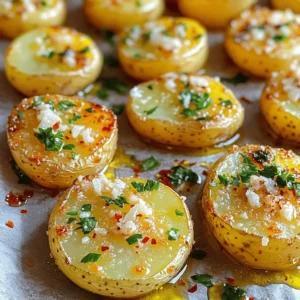
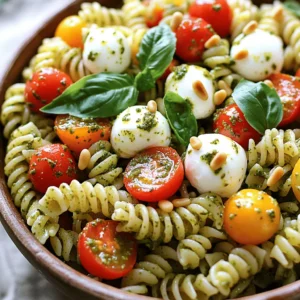
![- 1 lb (450g) chicken breast, cut into 1-inch pieces - 1/4 cup soy sauce (low sodium) - 2 tablespoons honey - 1 tablespoon rice vinegar - 2 cloves garlic, minced - 1 tablespoon ginger, grated - 1 teaspoon sesame oil - Wooden skewers, soaked in water for 30 minutes The main ingredient for these skewers is chicken breast. It’s lean and juicy. You will also need soy sauce for that deep umami flavor. Honey adds a sweet touch. Rice vinegar brightens the taste. Garlic and ginger give it that warm, aromatic kick. Lastly, sesame oil offers a nutty finish. - 1/4 cup soy sauce (low sodium) - 2 tablespoons honey - 2 cloves garlic, minced - 1 tablespoon ginger, grated For the marinade, mix soy sauce and honey in a bowl. Garlic adds depth, while ginger provides a fresh zing. This blend makes the chicken flavorful. Let it sit to soak up all the goodness. - 1/4 cup green onions, chopped (for garnish) - 1 tablespoon sesame seeds (for garnish) Once grilled, add a pop of color. Chopped green onions give a fresh taste. Sprinkle sesame seeds for crunch. These simple garnishes make your dish look and taste great. For the full recipe, check out the complete instructions on how to create these tasty teriyaki chicken skewers! How to Prepare the Marinade To make the marinade, grab a mixing bowl. Add 1/4 cup of soy sauce, 2 tablespoons of honey, and 1 tablespoon of rice vinegar. Then, add 2 minced garlic cloves and 1 tablespoon of grated ginger. Lastly, stir in 1 teaspoon of sesame oil. Whisk everything until the honey dissolves. This mix gives the chicken a sweet and salty flavor. Marinating the Chicken Cut 1 pound of chicken breast into 1-inch pieces. Place the chicken in a resealable bag or shallow dish. Pour the marinade over the chicken. Make sure every piece gets coated. Seal the bag or cover the dish, then refrigerate for at least 30 minutes. You can marinate it for up to 2 hours. This step is key for flavor. Preheating the Grill Before grilling, preheat your grill to medium-high heat. Aim for around 375°F (190°C). Proper heat helps achieve those tasty grill marks and ensures even cooking. Assembling the Skewers Pull the marinated chicken from the fridge. Thread the chicken pieces onto soaked wooden skewers, leaving a little space between each piece. This space helps the heat reach all sides of the chicken. Grilling Techniques Place the skewers on the preheated grill. Cook them for about 10 to 12 minutes. Turn the skewers occasionally for even cooking. Brush some reserved marinade on the skewers during the last few minutes for extra glaze and flavor. Ensuring Proper Cooking Temperature To check if the chicken is done, use a meat thermometer. The internal temperature should reach 165°F (75°C). This ensures the chicken is safe to eat and juicy. When done, remove the skewers from the grill. Let them rest for a few minutes before serving. For the full recipe, check out the detailed instructions. - Avoiding Dry Chicken: To keep your chicken juicy, use fresh chicken breast. Marinate the chicken for at least 30 minutes. This adds moisture and flavor. Grill on medium heat. Too high heat can dry it out. - Flavor Enhancements: Add some crushed red pepper for heat. You can also mix in orange juice for a citrus twist. Try adding a splash of pineapple juice for extra sweetness. - Serving Suggestions: Serve the skewers on a wooden board. This gives a rustic look. Place sliced cucumbers or bell peppers alongside for color. Drizzle extra teriyaki sauce over the skewers for a glossy finish. - Garnishing Ideas: Use chopped green onions and sesame seeds to garnish. They add crunch and a pop of color. You can also add a sprig of cilantro for a fresh touch. - Essential Kitchen Equipment: A good grill is key for these skewers. You’ll also need a mixing bowl for the marinade. Use a whisk to mix well. A meat thermometer ensures the chicken is cooked through. - Recommended Skewers: Use wooden skewers that have been soaked in water for 30 minutes. This helps prevent burning. Metal skewers are also great, as they can be reused. Want to know the full recipe? Check out the [Full Recipe] for all the details! {{image_2}} Chicken Alternatives You can swap chicken breast for other meats. Try using: - Chicken thighs for juicier flavor. - Pork tenderloin for a different taste. - Shrimp for a lighter option. - Firm tofu for a vegetarian twist. Vegan Options For a vegan version, use: - Marinated tempeh for protein. - Seitan for a meat-like texture. - Grilled vegetables like bell peppers or zucchinis. Different Marinades You can change the flavor by using different marinades. Here are some ideas: - Teriyaki with orange juice for a citrus kick. - Honey and sriracha for a sweet-spicy blend. - Miso paste for a deeper umami flavor. Spice Level Adjustments If you want heat, add some spice! Consider: - Red pepper flakes for mild warmth. - Fresh chili slices for a bold kick. - Sriracha mixed into the marinade for heat. Oven-Baking If you can’t grill, try baking the skewers. Here’s how: 1. Preheat the oven to 400°F (200°C). 2. Place the skewers on a baking sheet lined with foil. 3. Bake for about 15-20 minutes, flipping halfway through. Skillet Cooking You can also cook skewers in a skillet. Follow these steps: 1. Heat a little oil in a pan over medium heat. 2. Add the skewers and cook for 8-10 minutes. 3. Turn occasionally for even cooking. For a full recipe, refer to the [Full Recipe]. After you enjoy your teriyaki chicken skewers, store any leftovers carefully. Place them in an airtight container. This keeps moisture in and prevents odors. You should refrigerate them within two hours of cooking. For longer storage, freezing is an option. First, let the skewers cool completely. Then, wrap them tightly in plastic wrap and place them in a freezer-safe bag. They can last up to three months in the freezer. When it's time to enjoy your leftovers, reheating is key. You can use an oven or a microwave. For the oven, preheat it to 350°F (175°C). Place the skewers on a baking sheet and cover them with foil. Heat for about 10-15 minutes until warm. If you prefer the microwave, place the skewers on a microwave-safe plate. Heat for 1-2 minutes. This method is quick but can make the chicken a bit rubbery. To keep the texture and flavor, brush with a little teriyaki sauce before reheating. Wondering how long your teriyaki chicken skewers last? In the fridge, they stay good for about 3-4 days. Always check for signs of spoilage. Signs include an off smell or a change in color or texture. If you see any of these, it's best to throw them out. Keeping your food safe is important for health. Enjoy your teriyaki chicken skewers fresh and flavorful! For the full recipe, check out the section above. What can I use instead of chicken? You can use tofu, shrimp, or beef. Tofu works well as a meat substitute. Just cut it into cubes and marinate it like chicken. Shrimp grills quickly, so adjust cooking time. Beef can also be cut into strips and cooked the same way. How do I know when the chicken is done? Check the chicken's internal temperature. It should reach 165°F (75°C). You can also look for clear juices. If the juices run clear, the chicken is likely done. Make sure it has nice grill marks too! Is it gluten-free? Teriyaki chicken skewers can be gluten-free. Use gluten-free soy sauce or tamari in your marinade. Always check labels to be sure. This helps avoid gluten for those with sensitivities. Can I make it low-carb? Yes, you can make it low-carb. Skip the honey or use a low-carb sweetener. Serve the skewers with low-carb veggies. Zucchini or bell peppers are great options. They add color and flavor without extra carbs. What to serve with teriyaki chicken skewers? Serve with rice or noodles for a full meal. You can also pair it with a fresh salad. A cucumber or carrot salad adds crunch and balances the flavors. Any side dish recommendations? Consider grilled vegetables or a simple stir-fry. You can also serve it with steamed broccoli or snap peas. These sides add color and nutrition to your meal. For an extra touch, drizzle some teriyaki sauce over everything for a tasty finish. For the complete method to make these delightful skewers, check the Full Recipe. In this article, we explored how to make delicious teriyaki chicken skewers. We covered key ingredients, from chicken and teriyaki sauce to garnishes. I shared step-by-step instructions for marination, grilling, and cooking. You learned tips to keep your chicken moist and tasty. We also discussed variations and how to store leftovers. Finally, I answered common questions to help you succeed. With these insights, you can easily create a tasty meal that impresses everyone. Enjoy your cooking journey!](https://mysavedrecipe.com/wp-content/uploads/2025/04/883cdec6-da6f-49f7-a2b3-676d19808b7c-300x300.webp)

. - Step 1: Boil water and salt Fill a large pot with water. Add a good amount of salt. Bring it to a boil. - Step 2: Cook spaghetti or linguine to al dente Add 12 oz of spaghetti or linguine. Cook it until it's al dente, about 8 to 10 minutes. Reserve 1 cup of pasta water, then drain the pasta. - Step 3: Blend avocado, garlic, lemon juice, and basil In your food processor, add 2 ripe avocados, 2 cloves of minced garlic, 2 tablespoons of fresh lemon juice, and 1/4 cup of fresh basil leaves. Blend until smooth. - Step 4: Add olive oil and Parmesan cheese, blend until smooth Pour in 1/4 cup of extra virgin olive oil and 1/4 cup of grated Parmesan cheese. Blend again until the sauce is creamy. If needed, add some reserved pasta water to make it smoother. - Step 5: Toss pasta with sauce In a large bowl, mix the pasta with the avocado sauce. Make sure all the pasta is well coated. - Step 6: Adjust seasoning and garnish Taste the dish. Add salt and pepper to your liking. For a bit of heat, sprinkle in 1/4 teaspoon of red pepper flakes. Serve the pasta with halved cherry tomatoes and extra basil leaves on top. For the full recipe, check out the details above. Enjoy your creamy avocado pasta! To get the right sauce consistency, blend the avocados until smooth. If it feels thick, add a bit of reserved pasta water. This will help loosen the sauce. For a dairy-free option, replace Parmesan cheese with nutritional yeast. It gives a cheesy flavor without any dairy. You can also add a bit more lemon juice for extra zing. To keep your pasta al dente, cook it just until tender. Taste a piece before draining. It should have a slight bite to it. Always reserve a cup of pasta water before draining. This starchy water helps bind the sauce to the pasta later. You can use it to adjust the sauce's thickness as needed. Pair your creamy avocado pasta with grilled chicken or shrimp for added protein. You can also toss in seasonal veggies like spinach or cherry tomatoes for extra color and nutrition. For a beautiful plate, twirl the pasta with a fork and place it in the center. Garnish with extra basil leaves and halved cherry tomatoes for a fresh look. This makes the dish not only tasty but also visually appealing. {{image_2}} You can easily make creamy avocado pasta your own. Want more protein? Add grilled chicken or shrimp. Both options taste great with the creamy sauce. If you prefer veggies, try mixing in seasonal vegetables. Fresh spinach, zucchini, or cherry tomatoes work well. Boost the flavor of your dish with spices or herbs. A pinch of garlic powder or a sprinkle of paprika can add zest. Fresh herbs like parsley or cilantro can brighten the dish. You can also switch up your cheese. Try feta or goat cheese for a different taste. Feel free to get creative with sauces. A creamy Alfredo or pesto sauce can be a fun twist. You can also mix the avocado sauce with classic marinara for a unique blend. Experiment and find what you love! Check out the Full Recipe for more ideas. To store creamy avocado pasta, place it in an airtight container. This keeps moisture in and prevents the pasta from drying out. You can also cover the container with plastic wrap if you don’t have a lid. Try to eat leftovers within two days for the best taste and texture. When reheating, do so gently on the stove or in the microwave. Add a splash of olive oil or a bit of reserved pasta water. This helps restore the creamy texture. Stir well to mix the sauce back into the pasta. You can also add fresh basil or cherry tomatoes to refresh the dish. Can you freeze creamy avocado pasta? It’s best not to freeze it. The avocado may change texture when thawed. Instead, you can freeze the sauce and pasta separately. For the sauce, place it in a freezer-safe bag or container. For the pasta, let it cool, then store in a separate container. When ready to use, thaw the sauce and reheat the pasta. This way, you keep the best flavors and textures. Creamy avocado pasta can last about 2 to 3 days in the fridge. Store it in an airtight container to keep it fresh. If you notice any browning on the avocado, that's a sign it’s starting to spoil. A strong or sour smell also means you should toss it. Yes, you can make creamy avocado pasta ahead of time! For best results, make the sauce and cook the pasta separately. When you're ready to eat, mix them together. This keeps the pasta from becoming mushy. You can warm it up gently on the stove. Add a splash of water if needed to loosen the sauce. If you want to switch things up, you can use zucchini noodles or gluten-free pasta. Zucchini noodles are light and fresh. They add a nice crunch. Gluten-free pasta works well for those with dietary needs. Both options keep the dish tasty and satisfying. In this blog post, we covered how to make creamy avocado pasta. We discussed the simple ingredients, step-by-step instructions, and helpful tips. You can customize this dish with add-ins or different flavors. Don't forget the storage tips for leftovers. Making this meal is easy and fun. It’s tasty, healthy, and great for any occasion. Try it out, and enjoy your creamy avocado pasta today!](https://mysavedrecipe.com/wp-content/uploads/2025/04/8ca2522b-e89a-4c40-96dd-26e11eee8f74-300x300.webp)
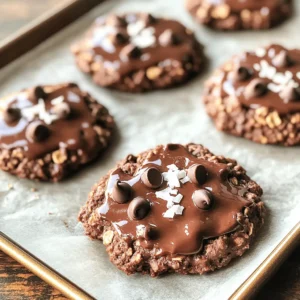
![To make this recipe, gather these items: - 4 bone-in, skin-on chicken thighs - 1/4 cup honey - 1/4 cup Dijon mustard - 2 tablespoons soy sauce (or tamari for gluten-free) - 1 tablespoon apple cider vinegar - 2 cloves garlic, minced - 1 teaspoon fresh thyme leaves (or 1/2 teaspoon dried) - 1 teaspoon paprika - Salt and pepper to taste - 1 tablespoon olive oil - Fresh parsley, chopped (for garnish) If you need to swap ingredients, here are some ideas: - Use maple syrup instead of honey for a different sweetness. - Switch Dijon mustard with yellow mustard for a milder taste. - If you don't have apple cider vinegar, try white wine vinegar or lemon juice. - Fresh thyme can be replaced with rosemary or oregano. - Use chicken breasts if you prefer less fat. To enhance the flavor of your chicken thighs, consider these seasonings: - Add a pinch of cayenne pepper for heat. - Try using smoked paprika for a smoky flavor. - Include some fresh lemon zest for brightness. - Garlic powder can boost the garlic flavor if you love it. This recipe is flexible, so feel free to mix and match based on what you have at home. For a full, detailed recipe, check out the Full Recipe to enjoy these savory honey mustard chicken thighs. To start, gather your chicken thighs. I prefer bone-in, skin-on thighs for the best flavor. Rinse them under cold water and pat them dry with paper towels. Drying helps the skin crisp up nicely. You want to make sure there’s no excess water. This step is key for great texture later. Next, we prepare the marinade. In a bowl, combine honey, Dijon mustard, soy sauce, apple cider vinegar, minced garlic, thyme, paprika, salt, and pepper. Whisk them until they blend well. This mixture is both sweet and tangy, giving the chicken great depth. Place the chicken in a large zip-top bag or a shallow dish. Pour the marinade over the chicken, ensuring every piece gets coated. Seal the bag or cover the dish. Let it sit in the fridge for at least 30 minutes. If you have time, marinate it for up to 2 hours. This extra time allows the flavors to infuse deeply. After marinating, it’s time to cook. Preheat your oven to 400°F (200°C). In an oven-safe skillet, heat olive oil over medium-high heat. Take the chicken out of the marinade, letting the extra drip off. Place the thighs skin-side down in the skillet. Sear them for about 5-7 minutes until the skin is golden brown and crispy. This step adds flavor and texture. Once done, flip the thighs over. Pour the leftover marinade over the chicken and place the skillet in the oven. Bake for 25-30 minutes or until the internal temperature reaches 165°F (74°C). The chicken should be juicy, and the skin should remain crispy. Once finished, let the chicken rest for about 5 minutes before serving. Garnish with fresh parsley. For the full recipe, check out the details above. To get that perfect crispy skin, you need to start with dry chicken. Pat the thighs dry with paper towels. This helps the skin crisp up nicely. When cooking, always sear the chicken skin-side down first. Use a hot skillet with olive oil. Let it cook for about 5-7 minutes without moving it. This will create a beautiful golden crust. You can also use a high oven temperature for roasting. This keeps the skin crispy while cooking through. Marinating adds flavor and moisture to your chicken. Use a mix of honey, Dijon mustard, and soy sauce to create a balanced taste. Make sure to marinate for at least 30 minutes. For more flavor, let it sit for up to 2 hours. You can use a zip-top bag for easy marinating. Just seal it tight and give it a good shake. Make sure every piece of chicken gets coated in the marinade. To ensure your chicken cooks evenly, use a meat thermometer. The internal temperature should reach 165°F (74°C). This guarantees it's safe to eat. When baking, let the chicken rest for about 5 minutes before serving. This helps the juices settle back into the meat. If you follow these tips, your chicken thighs will turn out juicy and flavorful every time. For a detailed recipe, check out the Full Recipe. {{image_2}} You can add fresh herbs to boost the flavor. Try rosemary, sage, or oregano. Simply chop the herbs and mix them into the marinade. The herbs add a nice touch and make the chicken extra tasty. I love using fresh thyme, as it pairs well with honey mustard. You can also use dried herbs if that’s what you have on hand. For a kick, add some heat to your honey mustard chicken. You can stir in red pepper flakes or cayenne pepper. Just a pinch will do! This adds a warm spice that balances the sweetness of honey. If you want more heat, add a dash of hot sauce to the marinade. This variation is perfect for those who enjoy bold flavors! You don’t have to stick with thighs. You can use drumsticks or chicken breasts instead. Drumsticks will have a great flavor, and they stay juicy. If you prefer chicken breasts, just make sure not to overcook them. They can dry out quickly. No matter the cut, the honey mustard marinade works well, so feel free to mix it up! For a complete recipe, check out the [Full Recipe]. To keep your honey mustard chicken thighs fresh, let them cool first. Place the chicken in an airtight container. You can store it in the fridge for up to three days. If you want to keep it longer, consider freezing. When it's time to enjoy your leftovers, reheat them properly. You can use the oven or the microwave. For the oven, set it to 350°F (175°C). Place the chicken in a dish and cover it with foil. Heat for about 15-20 minutes. In the microwave, place the chicken on a plate, cover it, and heat for 2-3 minutes. Check that it’s hot all the way through. Freezing is a great way to save your honey mustard chicken thighs. Wrap each thigh in plastic wrap, then place them in a freezer bag. Make sure to squeeze out as much air as possible. You can freeze them for up to three months. To thaw, place the chicken in the fridge overnight. This keeps the flavor and texture intact. For the full recipe, check out the earlier section. Enjoy your cooking! Yes, you can use boneless chicken thighs. They cook faster than bone-in thighs. Adjust the cooking time to about 20-25 minutes. Make sure to check the internal temperature reaches 165°F (74°C). This will ensure the chicken is fully cooked and safe to eat. I love serving these chicken thighs with roasted vegetables. You can use carrots, broccoli, or Brussels sprouts. A side of fluffy rice or quinoa pairs well. You can also serve a fresh salad with a light vinaigrette. These sides balance the sweet and tangy flavors of the chicken. You can store leftovers in the fridge for up to 3 days. Keep the chicken in an airtight container. Make sure it cools to room temperature before sealing. This way, the chicken stays moist and tasty for your next meal. You can also reheat it in the oven or microwave. Remember to check the temperature before eating. For the full recipe, check out the details above! In this post, we covered how to make honey mustard chicken thighs. We listed the ingredients, shared substitution tips, and suggested seasonings. You learned how to prepare, marinate, and cook the chicken perfectly. We shared tricks for crispy skin and storage tips for leftovers. Now you can enjoy delicious variations, like adding herbs or spice. Use these steps to impress at your next meal. Follow this guide for tasty results every time. Enjoy cooking!](https://mysavedrecipe.com/wp-content/uploads/2025/04/f6801e4c-abe1-413e-96fb-9cd9455b7c97-300x300.webp)

